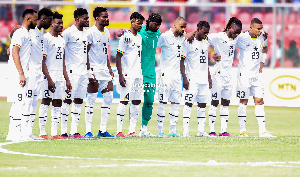Appiah Kusi Adomako, Leaders of Tomorrow Foundation, London
Last week fire outbreak at the Kumasi-Kejetia Central in which two children got burnt to death and properties worth millions of Ghana cedis got destroyed is enough to cause everyone to ask how prepared are the emergency services for large-scale emergencies and disasters.
We have more questions to ask our city authorities and emergency services about their preparedness in times like this. In this country we tend to live as if disasters and emergencies are trillion miles away from us. Or just to change the fire we pretend that we have in some utopian world where everything cool and we are immuned from any sort of disaster. I am of the firm belief that we need to use last week’s infernos in Kumasi as a wakeup call and to patch every loophole in our preparedness in handling disasters.
The first question is: where were the city authorities when illegal structures and illegal electrical connections were springing up in these markets? Another question to ask is: why is it that it took fire personnel such a long time for them to respond to the disaster? Whilst holding brief for the fire services, I want to find it imperative to blame the city authorities for allowing all these illegal structures to be sited at the market place. The Kumasi Metropolitan Assembly (KMA) is not the only one to be recipient of this blame but rather almost all districts, municipals and metropolitan in the country share the same fate.
Beyond asking these questions, the design of our cities and public buildings in the country must ensure that emergency services can move freely in emergencies to carry out their work. I think the Town and County Planning authorities need to go round and demolish all unauthorized structures in the cities that impede access to buildings in times of emergencies. In Ghana, people build haphazardly as if the foundations were laid in the night. The scale of the disasters in Kumasi and Accra last week could have been minimised if the fire services have had unfettered access to the market. NO FIRE HYDRANTS IN THE CITIES Fire hydrants are not for mere design or cosmetic purposes. They allow emergency services like fire crews access to water for extinguishing fires. Today all the fire hydrants in the city of Kumasi and Accra are mostly out of use. I cannot say much for Takoradi and other cities and towns. In the absence of these, more fire tenders need to be physically present at the site of the disasters. In the late 90’s, fire gutted one of the dormitories of the St Louis Training College in Kumasi. It was reported that the first fire tender that got to the site had no water in it. Whilst I do condemn this unprofessional act from the men in Fire Service I still believe that if the fire hydrants in the vicinity were to be functioning, the fire could have been brought to control earlier.
As we in Ghana claim that we are the gateway to West Africa and our desires to modernize Accra and Kumasi, then we should make sure that planning and designing of our cities meet international architectural and engineering standards. So long as fire and other disasters shall be with us, it is imperative that the design of our towns and cities take into account emergencies.
STREET ADDRESSESS
Ghana has not been able to metamorphose from using only postal addresses in contacting and locating people. In other societies, letters are delivered to house addresses. When you want to give someone directions to your house in Ghana, you have to use lots of words or several pages. Our streets have not properly been named and where they have been named, signs to inform people about the names of the streets are non-existent or inadequate.
What prevents us from continuing the vision of naming all streets in the country and getting good street maps for the cities and towns. The advantages of street naming are so great that we cannot gloss over. There have been a few disasters in the past when the response times have been longer because it took the emergency services considerable time to find the location of the disaster.
Aside this it should be mandatory say Ghana National Fire Service to inspect all buildings in the town and cities to make sure that the structures comply with fire safety standards. All those which do not conform must be made to correct any defects.
HOW PREPARED ARE WE?
The National Disaster and Relief and Management Organization (NADMO) is mandated by an Act of Parliament to respond to and manage disasters and initiate relief operations in the country. The seeming lack of preparedness of NADMO in handling disasters in the country has been demonstrated in past incidents. Last two years, when the three northern regions got flooded, it took NADMO long time for them to respond to the flood disaster. How long did it take NADMO to respond to the flood disasters? If NADMO’s response had been prompt enough, it would have hopefully minimised the loss of lives. Again, if NADMO and the Meteorological Services Department had collaborated properly, I believe that most of the disasters in the country would been managed properly.
THE WAY FORWARD
The effects of disaster can be reduced through proper planning. The design and planning of cities should consider health, safety and emergency factors. Floods can be reduced greatly by constructing appropriate sewerage systems like fire hazards can be reduced by following fire safety standards.
In summary, better planning, whilst not a panacea to the occurrence of disasters, yet can go a long way to mitigate the effects of such disasters and where possible, exclude some emergencies altogether.
Appiah Kusi Adomako is an international freelance writer and writes from London. He can be contacted through: appiahkusiy2k@yahoo.com
Opinions of Monday, 8 June 2009
Columnist: Adomako, Appiah Kusi














